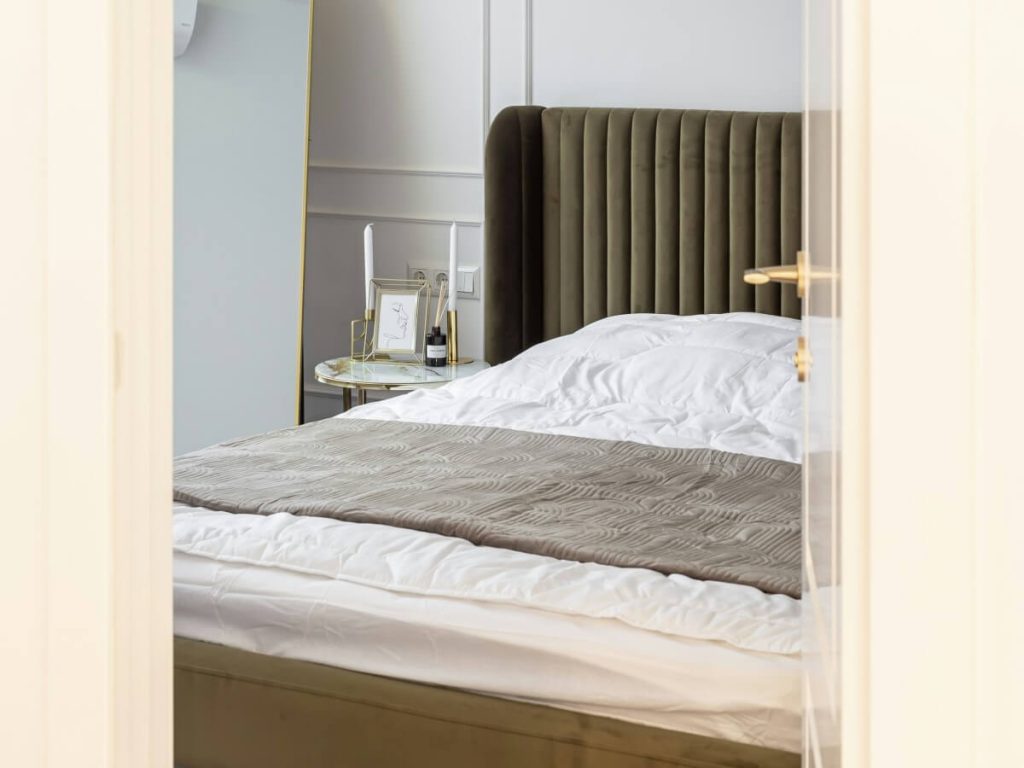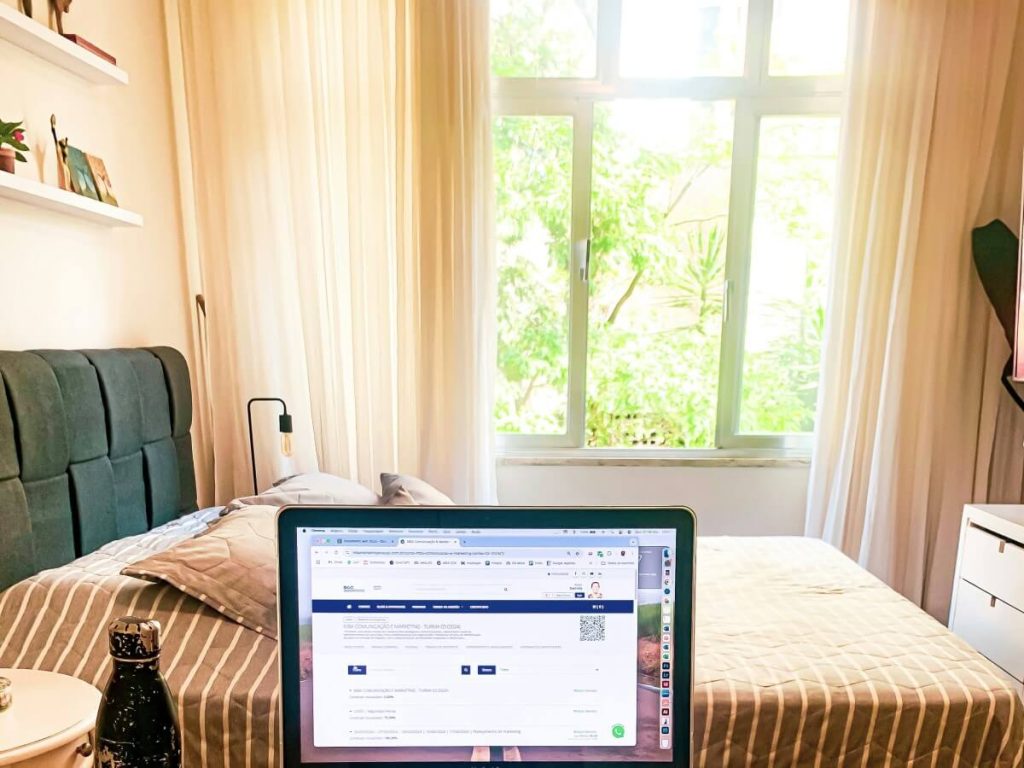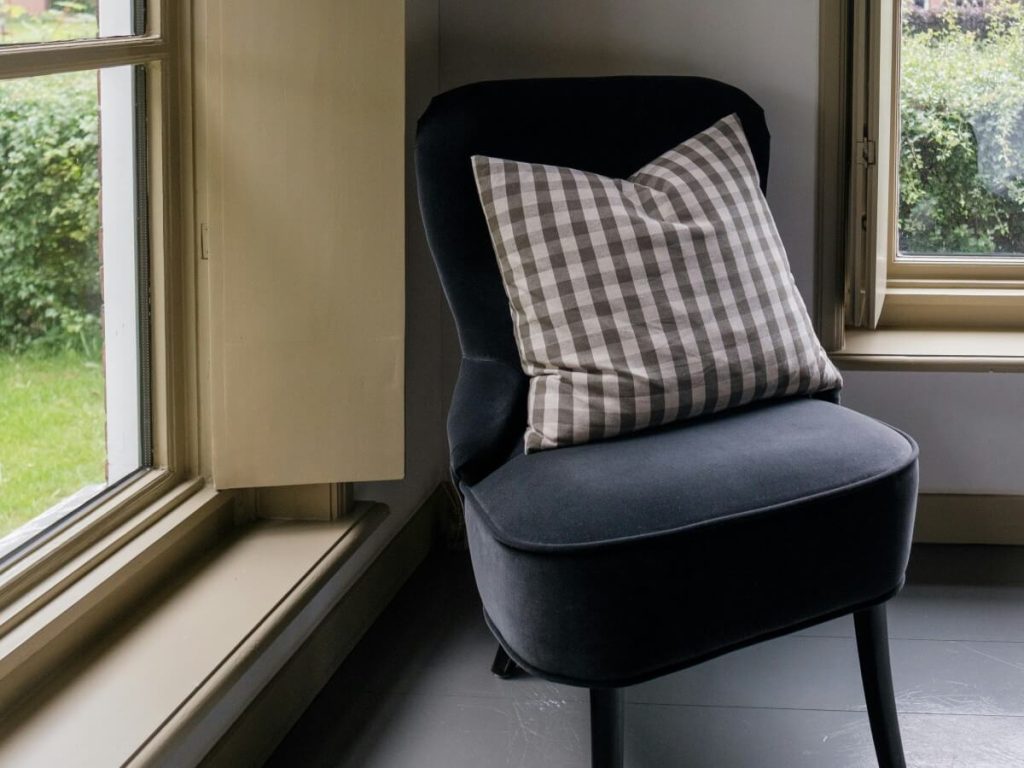Where to Put a Bed in a Small Room: Layout Tricks That Actually Work
Struggling with a tiny bedroom? Find your bed placement layout—ranging from center placement to against the wall placement.

The number one question in any small bedroom layout? “Where do I put the bed?” When every square inch counts, the placement of your bed isn’t just about comfort—it’s about unlocking more floor space, making the room feel balanced, and creating a layout that actually works for your lifestyle.
Whether you’re working with a narrow boxy room, a quirky rental layout, or just too much furniture, here’s how to make smart bed placement decisions that maximize both space and style.
Table of Contents
Quick Small Bedroom Layout Checklist
Use this checklist to guide your bed placement decisions and ensure functionality, flow, and comfort in a small room layout.
- Leave at least 24″ or 60 cm of space to walk on each side
- Don’t block closet doors or windows that open outward
- Use rugs to define the bed area even if it’s in an unusual spot
- Let the bed control the flow of the room, not the other way around
1. Centered on the Long Wall (Even if It’s Tight)

The most classic—and still the best starting point—for bed placement in a small room is anchoring your bed on the longest wall. Why? It creates symmetry, gives you space for bedside tables (even tiny ones), and makes the bed feel like the focal point of the room.
Tiny Nightstand Tips: By using wall-mounted sconces or swing-arm lamps instead of table lamps, you can make tiny nightstands to work on your favor.
If you have the room for two nightstands, go for symmetry. Matching lamps and bedside tables create a pulled-together look—even in tight quarters. If you’re working with less space or an off-center window, try an asymmetrical arrangement: one nightstand on one side, and a wall shelf or stack of books on the other.
To visually lift the space, style the wall above the bed. Options include:
- A single large piece of artwork
- A trio of vertical prints
- A soft textile or tapestry
These elements create focal point that guide the eye upward, giving the illusion of more height and helping the bed feel integrated into the room’s vertical space.
This layout is ideal for: rectangular rooms, long narrow spaces, or any layout where balance matters. (Even if It’s Tight)
2. Position Your Bed in the Center of a Square Room

Yes, you can “float” a bed even in a small space. In square-shaped rooms where placing a bed against the wall throws the room off balance, try pulling the bed slightly off the wall and centering it. Add narrow nightstands or shelves on either side to keep symmetry and function intact.
This layout creates a boutique hotel feel while still giving you access on both sides.
Tips: If your room has windows on both sides of the longest wall, center your bed between them for instant visual symmetry.
To ground the bed and prevent it from feeling like it’s drifting in the space, layer a large area rug underneath—ideally one that extends at least 18–24 inches or 50–60 cm beyond the bed on all sides. Use pendant lights or symmetrical floor lamps to visually anchor the corners and frame the bed.
Why using rugs on small bedroom? Choose a bold or patterned rug to help establish the bed zone without crowding your small bedroom.
3. Push It Against the Wall (Works for Every Bedroom)

When you have a tiny bedroom that is really tight—think under 9 feet or 3 meters wide—pushing your bed against one wall may be the only realistic option. But that doesn’t mean it can’t look like a design compromise.
Style it like a daybed with layered pillows, a long lumbar, and even a draped throw to keep it cozy and intentional. If only one side is accessible, make sure to leave at least 20–24 inches or 60–70 cm of walking clearance to avoid squeezing through a tight gap.
When to put bed against a wall? In a 90–120 sq ft or 9–11 sq m, place a single or double bed lengthwise against the long wall, leaving open one side of floor area for other furniture.
To add storage and style in a tiny bedroom:
- Mount a shelf above the bed for books and lighting
- Use a wall-mounted sconce or plug-in reading lamp
- Add a small basket or rolling cart at the foot for essentials
Anchoring Bed Hack: Treat the wall behind the bed like a feature wall—try peel-and-stick wallpaper or framed art to anchor the look.
4. Place It Under the Window

Many people shy away from putting the bed under a window—but in small rooms, this can be a game-changer.
If the window is centered on the wall, the bed helps anchor it. Use low-profile curtains or Roman shades to keep things clean, and let the window act like a pseudo-headboard.
With or without headboard? Keep headboards minimal or opt for no headboard to keep the look light and open.
Concerned about drafts or noise on your bedroom? You’re not alone. Combat potential issues by choosing insulated window treatments like thermal curtains or honeycomb shades. If noise is a factor, layer with blackout drapes or add a fabric panel behind the headboard for extra sound absorption.
How to solve drafts or noise? Use a wood or upholstered headboard as an additional barrier between your bed and the window for comfort.
5. Angle It in a Corner (If You Prefer to Differ)

Want to make a statement and create usable wall space? Place the bed diagonally in a corner. It’s unconventional, but in some square or L-shaped rooms, this opens up the wall for dressers, mirrors, or floating shelves.
This setup works best when there’s visual balance on either side. Add corner shelves behind the headboard or a tall floor lamp tucked into the negative space. A large plant, floor mirror, or angled rug can help soften the strong diagonal lines.
Do not use bulky headboards in angled bed setup: Avoid bulky headboards in this setup—get upholstered panels or painted wall treatments instead.
It’s not for every layout—but when it works, it really works. It’s unconventional, but in some square or L-shaped rooms, this opens up the wall for dressers, mirrors, or floating shelves.
6. Build Around a Loft or Raised Platform (For Extra Tiny Bedroom)

In ultra-tiny spaces (especially studios or multipurpose bedrooms), placing your bed on a raised platform or lofting it can unlock storage or free up square footage underneath. This strategy is ideal when you need the room to function beyond just sleeping.
Use the space under the bed for drawers, pull-out bins, or even a home office zone. Looking for more ideas? Here are 25 small bedroom ideas to follow.
Modular platform beds with integrated steps or drawers are a great investment. If going vertical, consider ceiling height—at least 9 feet or 3 meters is ideal for comfortable loft sleeping.
Safety is important in loft bed setup: Make sure to install sturdy side railings and step lighting for loft beds.
Final Thoughts
There’s no one-size-fits-all rule for bed placement in small rooms. What matters is how the space feels when you walk in—and how it functions for your daily life. By thinking beyond convention and testing layouts on paper (or in real life!), you can turn even the trickiest small room into a restful, stylish retreat.
FAQs: Bed Placement in Small Bedrooms
1. What’s the best bed position to make a room feel larger?
Placing your bed on the longest wall—centered—is often the most space-enhancing. It keeps the room balanced and allows better flow.
2. Can I put my bed in front of a window?
Yes! Just use light-filtering or thermal curtains to deal with drafts, and consider a minimal or upholstered headboard for added comfort.
3. Is it okay to have only one nightstand?
Absolutely. You can style it asymmetrically with a wall-mounted shelf or hanging light on the other side.
4. What’s the minimum clearance I need to walk around the bed?
Aim for at least 24 inches or about 60 cm on either side and at the foot of the bed, if possible, for you to walk around.
5. Do lofted beds really save space?
Yes, especially in multifunctional rooms. You can use the area below for storage, a desk, or even a lounge setup.






